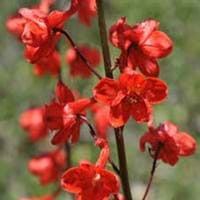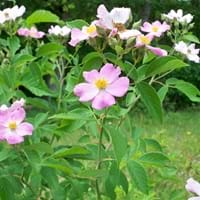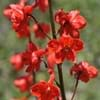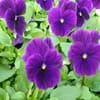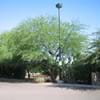Life Span
Perennial
Perennial
Type
Flowering Plants, Ornamental Plants, Shrubs
Flowering Plants, Ornamental Plant, Perennial, Shrubs
Origin
Africa
Canada, Eastern North America
Types
Not Available
Not Available
Number of Varieties
Not Available
Habitat
gardens, meadows
Wide range of ecological site
USDA Hardiness Zone
Not Available
Not Available
AHS Heat Zone
12 - 6
Not Available
Sunset Zone
Not Available
Not Available
Habit
Upright/Erect
Clump-Forming
Minimum Width
Not Available
Flower Color
Red, Rose
Baby Pink
Flower Color Modifier
Bicolor
Bicolor
Fruit Color
Non Fruiting Plant
Non Fruiting Plant
Leaf Color in Spring
Green
Dark Green
Leaf Color in Summer
Light Green
Dark Green
Leaf Color in Fall
Green, Yellow green
Dark Green
Leaf Color in Winter
Green, Light Yellow, Tan
Light Green
Leaf Shape
Palmate and toothed
Pinnate
Plant Season
Spring, Summer, Fall, Winter
Spring, Summer, Fall
Sunlight
Full Sun, Partial Sun
Full Sun, Partial Sun
Type of Soil
Clay, Loam, Sand
Loam, Sand
The pH of Soil
Acidic, Neutral, Alkaline
Acidic, Neutral
Soil Drainage
Well drained
Well drained
Bloom Time
Not Available
Spring, Late Spring, Early Summer, Summer, Late Summer, Early Fall, Fall
Repeat Bloomer
No
Not Available
Tolerances
Heat And Humidity
Drought
Where to Plant?
Ground, Pot
Container, Ground, Pot
How to Plant?
Seedlings, Stem Cutting
Cuttings
Plant Maintenance
Medium
Medium
Watering Requirements
It cannot sustain wet-feet, Keep ground moist, Requires regular watering, Water more in summer
Average Water Needs
In Summer
Lots of watering
Lots of watering
In Spring
Moderate
Moderate
In Winter
Average Water
Average Water
Soil pH
Acidic, Neutral, Alkaline
Acidic, Neutral
Soil Type
Clay, Loam, Sand
Loam, Sand
Soil Drainage Capacity
Well drained
Well drained
Sun Exposure
Full Sun, Partial Sun
Full Sun, Partial Sun
Pruning
Cut away fading foliage, Do not prune during shooting season, Remove damaged leaves, Remove deadheads
Remove damaged leaves, Remove dead branches, Remove dead leaves
Fertilizers
High-phosphorous fertilizers used, Organic Flower Fertilizer
All-Purpose Liquid Fertilizer
Pests and Diseases
Bacterial leaf spot, fungus, Mealybugs
Beetles, Black Spot, Caterpillars, Downy mildew, Mosaic viruses, Powdery mildew, Rust, Scale insects, Thripes
Plant Tolerance
Heat And Humidity
Drought
Flower Petal Number
Single
Double
Edible Fruit
No
Not Available
Foliage Texture
Fine
Medium
Foliage Sheen
Matte
Glossy
Invasive
No
Not Available
Self-Sowing
No
Not Available
Attracts
Butterflies
Birds, Butterflies
Allergy
Severe allergen, Skin irritation, Skin rash, Throat itching, Vomiting
Rash
Aesthetic Uses
Beautification, Borders, Showy Purposes, Used for decorating walls, fences, gates, hedges, etc.
Showy Purposes
Beauty Benefits
No Beauty Benefits
Not Available
Environmental Uses
Air purification
Air purification
Medicinal Uses
No Medicinal Use
Not Available
Part of Plant Used
Flowers
Flowers
Other Uses
Used in making blue ink
Oil is used in perfume, soaps, creams, etc.
Used As Indoor Plant
No
Yes
Used As Outdoor Plant
Yes
Yes
Garden Design
Edging, Feature Plant
Container, Cutflower, Feature Plant, Foundation, Mixed Border, Topiary / Bonsai / Espalier
Botanical Name
Delphinium cardinale
Rosa carolina
Common Name
Scarlet larkspur, Cardinal larkspur
Carolina rose, pasture rose, low rose
In Hindi
लाल रंग Delphinium
Carolina rose
In German
Scarlet Delphinium
Carolina stieg
In French
Scarlet Delphinium
Rosa carolina
In Spanish
Scarlet Delphinium
Carolina se levantó
In Greek
Scarlet Δελφίνιο
Καρολίνα τριαντάφυλλο
In Portuguese
Scarlet Delphinium
Carolina Rosa ou Pasture Rose
In Polish
Scarlet Delphinium
Karolina róży
In Latin
Delphinium coccino
Carolina resurrexit
Phylum
Tracheophyta
Magnoliophyta
Class
Magnoliopsida
Magnoliopsida
Order
Ranunculales
Rosales
Family
Ranunculaceae
Rosaceae
Clade
Angiosperms, Eudicots
Not Available
Tribe
Not Available
Not Available
Subfamily
Not Available
Not Available
Number of Species
Not Available
Properties of Scarlet Delphinium and Carolina Rose
Wondering what are the properties of Scarlet Delphinium and Carolina Rose? We provide you with everything About Scarlet Delphinium and Carolina Rose. Scarlet Delphinium doesn't have thorns and Carolina Rose doesn't have thorns. Also Scarlet Delphinium does not have fragrant flowers. Scarlet Delphinium has allergic reactions like Severe allergen, Skin irritation, Skin rash, Throat itching and Vomiting and Carolina Rose has allergic reactions like Severe allergen, Skin irritation, Skin rash, Throat itching and Vomiting. Compare all the properties and characteristics of these two plants. Find out which of these plant can be used as indoor plant. If you are interested to decorate your house and garden, find out aesthetic uses, compare them and select the plant which will beautify your surrounding. Along with beautification, try comparing medicinal and edible uses of Scarlet Delphinium and Carolina Rose and you can choose the plant having best and most benefits.
Season and Care of Scarlet Delphinium and Carolina Rose
Season and care of Scarlet Delphinium and Carolina Rose is important to know. While considering everything about Scarlet Delphinium and Carolina Rose Care, growing season is an essential factor. Scarlet Delphinium season is Spring, Summer, Fall and Winter and Carolina Rose season is Spring, Summer, Fall and Winter. The type of soil for Scarlet Delphinium is Clay, Loam, Sand and for Carolina Rose is Loam, Sand while the PH of soil for Scarlet Delphinium is Acidic, Neutral, Alkaline and for Carolina Rose is Acidic, Neutral.
Scarlet Delphinium and Carolina Rose Physical Information
Scarlet Delphinium and Carolina Rose physical information is very important for comparison. Scarlet Delphinium height is 200.00 cm and width Not Available whereas Carolina Rose height is 90.00 cm and width 60.00 cm. The color specification of Scarlet Delphinium and Carolina Rose are as follows:
Scarlet Delphinium flower color: Red and Rose
Scarlet Delphinium leaf color: Green
Carolina Rose flower color: Baby Pink
- Carolina Rose leaf color: Dark Green
Care of Scarlet Delphinium and Carolina Rose
Care of Scarlet Delphinium and Carolina Rose include pruning, fertilizers, watering etc. Scarlet Delphinium pruning is done Cut away fading foliage, Do not prune during shooting season, Remove damaged leaves and Remove deadheads and Carolina Rose pruning is done Remove damaged leaves, Remove dead branches and Remove dead leaves. In summer Scarlet Delphinium needs Lots of watering and in winter, it needs Average Water. Whereas, in summer Carolina Rose needs Lots of watering and in winter, it needs Average Water.
